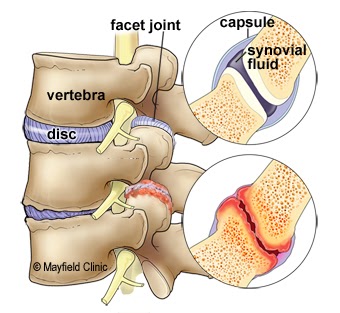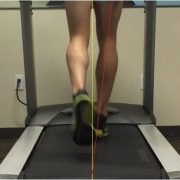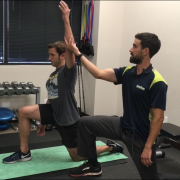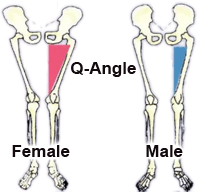Facet Joint Syndrome and Pain
Some of the links on this page regarding facet joint syndrome and pain are affiliate links. We may receive a small commission if you choose to click the link and purchase an item. By clicking, you are helping our small business and we thank you! We only link to products we believe in and use regularly with our patients.
Facet Joint Syndrome Overview
Facet joint syndrome can be a significant source of back and neck pain. It is caused by irritation of the joints between the vertebrae on the back side of the spine. The facet joint can become inflamed from a variety of causes such as a bad night’s sleep, prolonged poor posture, awkward lifting and others. When the joint gets irritated it triggers pain signals in nearby nerve endings.
Anatomy of the Facet Joints
The spine is made of a column of moveable bones called vertebrae that connect to one another. Each vertebra functions as a three-joint complex with a large disc in the front and two facet joints in the back. This tripod design is strong, keeping the bones linked together while allowing our spine to bend and twist. Facets are synovial joints that are lined with cartilage, lubricated in synovial fluid and covered by a joint capsule. Healthy facet joints glide and slide as the back moves, but prevent over-twisting.
Figure 1. Side view of the spine shows a normal disc and facet joint (top). Irritation to the disc and facet joint syndrome can cause arthritic pain, swelling and stiffness (bottom).
In Facet joint syndrome, the facets get inflamed which causes pain and loss of motion in the joint. In turn, the muscles in the area can stiffen and spasm leading to further pain and decreased motion.
Figure 2. The irritated joint sends pain signals to the brain via small nerves in the capsule called medial branch sensory nerves
What are the Symptoms of Facet Syndrome?
There are several symptoms that indicate a person’s pain is coming from the facet joints. The pain is often a diffuse, dull ache in the neck or in the shoulder blade area. Often people describe the pain as a sharp, pinching, catching or a “crick” in their neck.
Movements such as looking up or turning your head side to side especially towards the affected joint will often cause pain. Facet joint symptoms may also mimic the pain of a disc herniation. If the inflammation irritates the spinal nerves, pain may be felt down the extremity. The pain may be chronic, or come in periodic flare-ups.
How is a Diagnosis of Made?
Different movements through the injured area and pointing to the painful area help with the working diagnosis. The doctor may manipulate your joints or feel for tenderness over the spine. In some cases, imaging studies, such as X-ray, CT, or MRI, may be ordered to help in the diagnosis. Imaging can help rule out other pathology of the spine, shoulders, hip, etc. which may be causing the symptoms.
What Treatments are Available?
Chiropractic adjustments are effective in relieving the pain from facet joint syndrome. In fact, the sound of that is made when your spine is adjusted is actually gas escaping from the facet joints which leads to decreased pressure and improved movement. Traction of the head and neck is also effective for the same reason as adjustments in that it helps to open the facet joints and decrease the pressure that is creating pain.
Active Release techniques (ART) are deep tissue muscular treatments that help relieve tightness and spasm surrounding the irritated facet joint. By decreasing muscle tension around the facet joints, adjustments are much more easily performed.
Home Exercise Therapy
After treatment, targeted stretches and exercises are important to perform daily while recovering. Towel neck mobilization exercises are one of the best types of exercises for facet syndrome. This exercise (as shown below) uses a towel to create a fulcrum for the spine to bend over. This allows the facet joint to remain open as you move; we often see people that can barely look up without pain quickly gain pain free motion by performing this exercise.
Stretching encouraging flexion of the neck as shown in the video below is helpful. Rotational mobilization may be helpful as well. In acute injury, this is often too aggressive but as the neck heals, the neck rotational exercise can be very beneficial.
Cervical Spine Devices
At home traction devices are a great at home treatment option. Inflatable neck traction devices are easy to use and you can take them anywhere with you. The Neck Hammock is an easy to use system that only requires a door handle to use. The absolute best neck traction device is the Saunders Pneumatic Traction device. It is bulky but is ale to deliver substantial traction to the neck joints.
Lumbar Spine Devices
For lumbar spine traction, there are two devices that we find most useful. The first and most commonly known is an inversion table. The Teeter Inversion Table is one of the best and most reliable inversion tables. As with all inversion tables, they take up quite a bit of space and are not easily moveable. The second device is the Back Bubble. This is a convenient alternative to an inversion table. You need a place to hang it from, a doorway pull-up bar is the easiest. Not only does this device work well, you can put it away when you are done using it! You do not need permanent space in your home like the inversion table.
Day to Day Self Care
Self care is an important component of care for facet pain in the neck. Using correct posture and keeping your spine in alignment are important things you can do to prevent painful episodes. You may need to make adjustments to your daily standing, sitting, and sleeping habits. Light cardiovascular exercise like walking or riding a bike is very helpful for a painful facet joint, and it can help you heal faster. Facet joint pain usually resolves after 4-6 treatments over the course of 1-3 weeks.
Recovery and Prevention
Regular stretching, strengthening, postural awareness, and cardiovascular exercise reduces stress to the facet joints. Facet pain can be recurrent and in some cases lead to chronic neck pain if not treated effectively and cared for by making long term preventative changes.
Dr. Kevin and Travis Rose DC are chiropractors trained in treating overuse and sport related injury. Peak Form Health Center is located in Mission Valley, San Diego near the neighborhoods of La Jolla, Mission Hills, Kensington, and Carmel Valley. Schedule an appointment with use by using “Schedule Now” tab at the top of this page, or call 619-818-4306.












